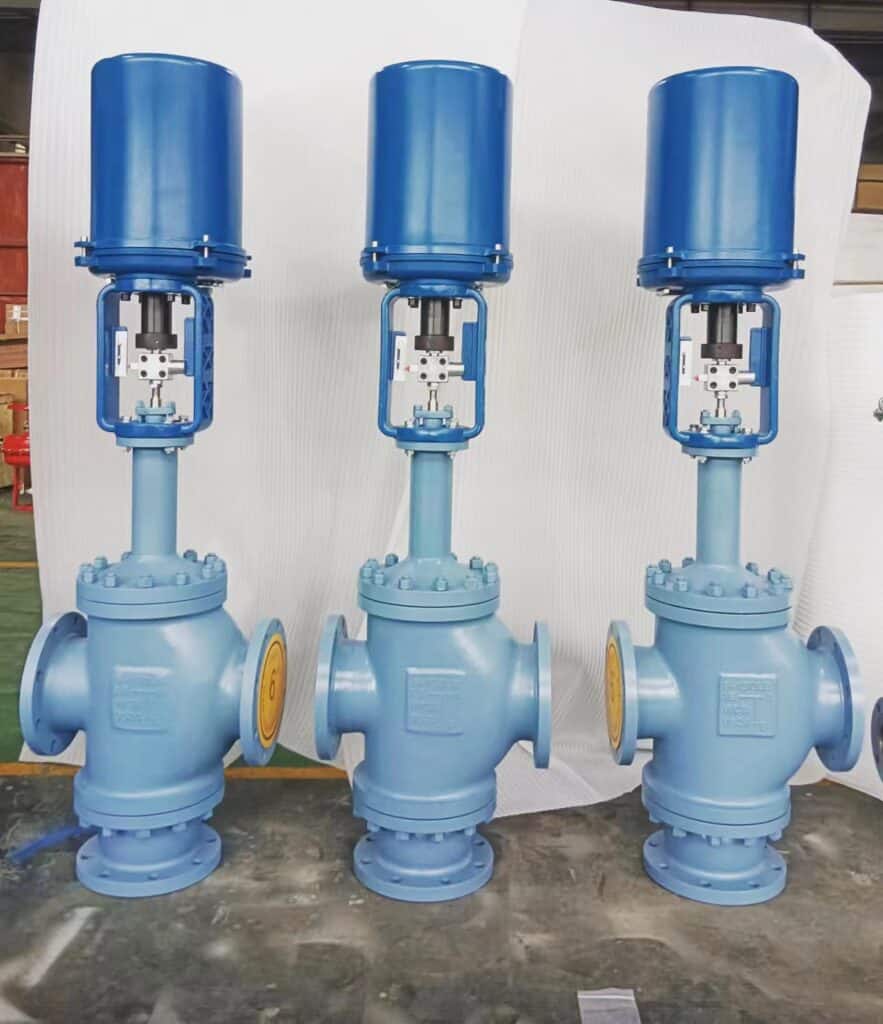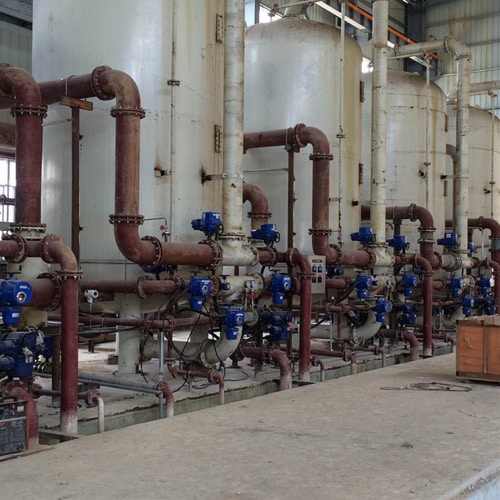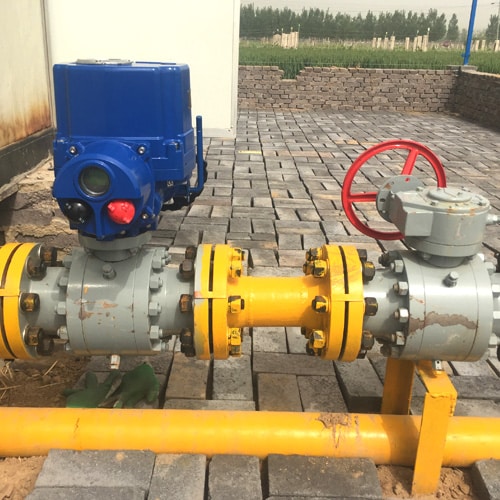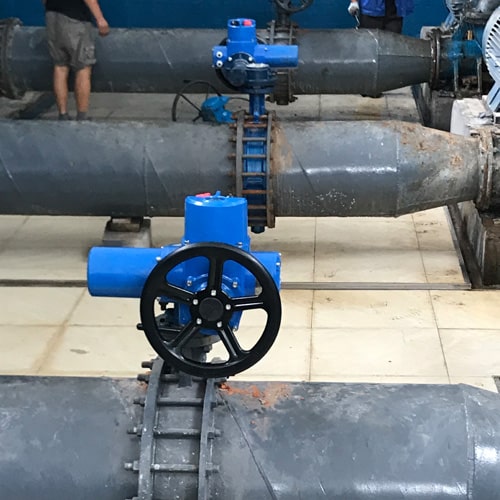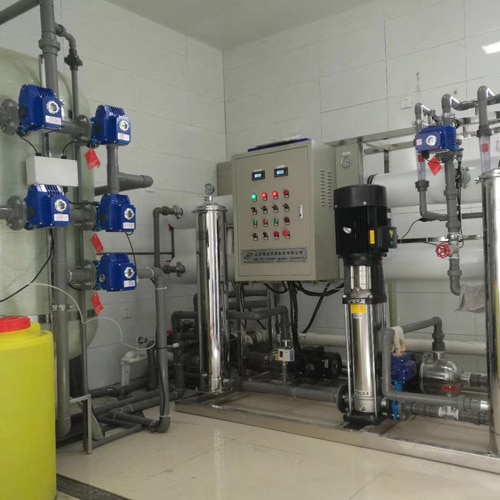Are you interested in learning more about electric actuators for valves? Look no further than The Ultimate Guide to Electric Actuators for Valves!
This comprehensive guide offers a detailed overview of electric actuators for valves, including their uses, benefits, and types. You’ll also learn about the different components that make up an electric actuator, such as motor types, gear ratios, and limit switches.
Not only that but The Ultimate Guide to Electric Actuators for Valves also covers the installation and maintenance of electric actuators, providing valuable tips and tricks. With this guide, you’ll have all the information you need to choose and maintain the suitable electric actuator for your valve application.
Whether you’re a seasoned engineer or just starting out, The Ultimate Guide to Electric Actuator for Valves is the perfect resource for anyone interested in this powerful technology.
what is a valve actuator?
A valve actuator is a device that is used to operate a valve by moving its various components, such as the gate, ball, or plug, in accordance with a control signal. It is essentially a motorized mechanism that can open or close a valve automatically or remotely.
There are different types of valve actuators depending on their mode of operation, such as manual, pneumatic, hydraulic, and electric. Some actuators are designed for linear motion, while others are for rotary motion.
electric actuator working principle
The working principle of an electric actuator is based on the conversion of electrical energy into mechanical energy through an electric motor, which then produces a rotational motion. This rotational motion is then transmitted via a series of gears to the valve stem, which activates the valve to either open, close, or regulate the flow of fluids or gases.
The electric actuator consists of several components, including the electric motor, gears, limit switches, and control circuitry. When an electrical current is applied to the motor, it generates rotational force, which is then transmitted to the gears. The gears transform the motor’s high-speed and low-torque output into a low-speed and high-torque output, which is then transferred to the valve stem.
The position of the valve is controlled by the limit switches, which detect the position of the actuator and provide feedback to the control circuitry. With this feedback, the control circuitry can adjust the power supply to the motor to ensure the valve is in the desired position.
Type of Electric Actuators
There are three types of electric actuators commonly used in industrial processes, which can use different electric power and operate various types of valves.
1. Multi-Turn Electric Actuator

The electrically driven multi-turn electric actuator is one of the most popular and reliable types of electric actuators. It uses a single-phase or three-phase electric motor to drive the gear or worm gear to finally operate the valve stem nut, and the stem nut makes the valve stem movement to open or close the valve.
Multi-turn electric actuators can quickly drive large size valves. To protect the valve from damage, a limit switch sensor is installed at the end of the valve stroke for cuts off the motor power, and a torque-sensing device also cuts off the motor power when the safety torque is exceeded, a position switch is used to indicate the opening and closing status of the valve, and a handwheel mechanism with a clutch device is installed to operate the valve manually in case of power failure.
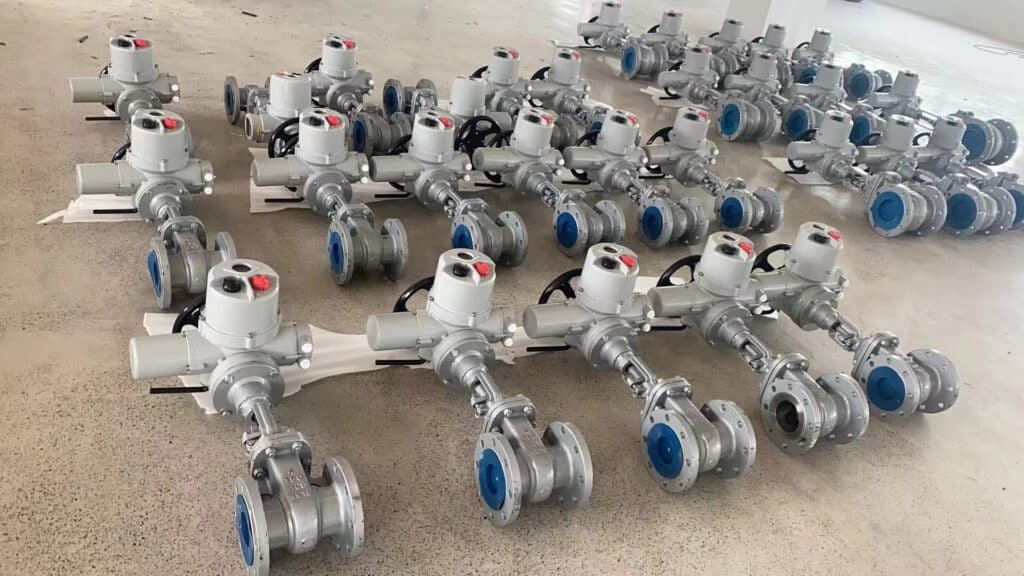
The main advantage of this type of electric actuator is that all components are mounted in one housing and all basic and advanced functions are integrated into this waterproof, dustproof, and explosion-proof housing. The main disadvantage is that when the power supply fails, the valve can only remain in the last position, and only with a backup power system can the valve achieve a fail-safe position (fail-open or fail-closed)
2. Linear Output Electric Actuator
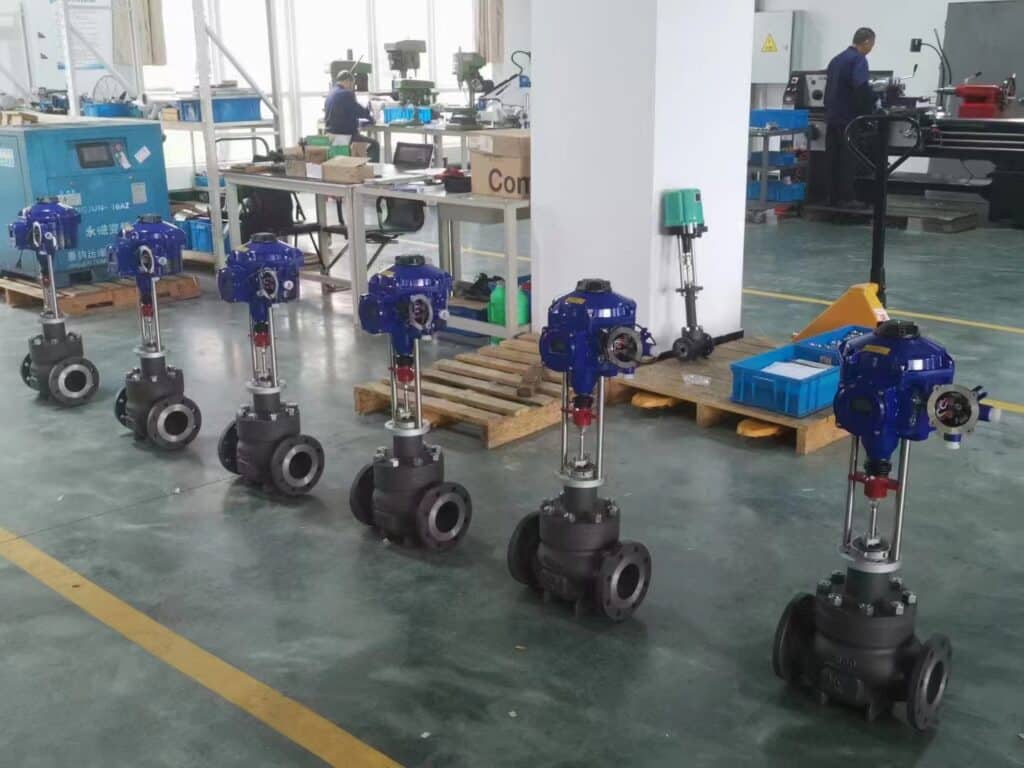
This type of electric actuator is often used to operate globe valves, single-seat control valves, double-seat control valves, knife gate valves, and gate valves. The structure is simple, and reliable in operation, and it is easy to achieve fail-safe operation mode.
3. Electric 1/4 Turn Electric Actuator
This kind of electric actuator is similar to the electric multi-turn electric actuator, the main difference is that the final output of the electric actuator is 1/4 turn to 90-degree movement. The new generation electric 1/4 turn electric actuator combines most of the complex functions of a multi-turn electric actuator, such as: using a non-access user-friendly operation interface to achieve parameter setting and diagnostic functions.

1/4 turn electric actuators are compact and can be mounted on small size valves, typically with an output torque of up to 2,000 NM, and they can be fitted with batteries for fail-safe operation.
In summary, gate valves and globe valves are often equipped with multi-turn electric actuators, and butterfly valves and ball valves are commonly equipped with 1/4 turn electric actuators.
In industrial processes, there are various types of valves are used, which have different working principles, types of action, and different functions. For automated valves, the actuator rotates the valve disc angle or lifts the valve plug to control the opening and closing or modulating. The selection of electric actuator needs to be matched according to the requirements of the valve working conditions, such as rotary-stroke electric actuator is the output torque, while the linear-stroke electric actuator is the output displacement thrust.

How to Select Electric Actuator for Valves Correctly?
There are a large number of electric valves in power plants, as one of the terminal links of an automatic control loop, the right selection of an electric actuator directly affects the performance of electric valves, because the electric valve plays a vital role in the power station, so the correct selection of electric actuator will affect the reliability, safety, economy of the entire power plant, and even the normal operation of the unit.
1. Operating Condition of Valves
According to the operating conditions of valves select control type electric actuator or on/off type electric actuator. In general, the electric actuator used for control valves is mainly regulating type, while electric gate valves and globe valves, etc. are usually assembled with on/off type electric actuators.
2. Frequency of Valve Use Per Unit of Time
When we choose to use the regulating or switching type valve electric actuator for an electric valve, the frequency of use of the valve in the unit time also determines which electric actuator should be selected.
3. The Power of the Electric Actuator for Valves
As the original control valve only regulates the flow rate or pressure without a tight shutoff function, the upstream usually installed a shut-off valve, so the leakage level of the control valve is commonly not high requirements. But with the increasing requirements of the control valve, and the development of power station design to large capacity, multi-parameter, the original valve electric actuator power can not meet the requirements, electric actuator also gradually began to use high-power products.
For electric valves, only by choosing the right type of valve electric actuator can play a proper role. Therefore, when you choose the type for the actuator, try to choose a well-known brand, not only quality assurance, and can get technical support and spare parts in time.
Any type of electric actuator is a device that uses power to drive a valve. This device assembly with a hand operator to open or close the valve, or an intelligent electronic component with sophisticated control and measurement devices to control the valve continuously working. With the development of microelectronics technology, electric actuators have become more complex. The early electric actuators were nothing more than motor gearing with position sensing switches. Today’s electric actuators have more advanced functions, they can not only open or close the valve but also detect the operating status of the valve and the electric actuator to provide various data for predictive maintenance.
As more and more factories adopt automation control systems, manual operation is replaced by mechanical or automated equipment, people require electric actuators to play the role of interface between the control system and valve mechanical movement, and they also require electric actuators to enhance safety work and protection of the environment. On some dangerous occasions, the automated electric actuator device can reduce the injury of personnel. Some special valves require emergency opening or closing under special circumstances, and electric actuators for these valves can prevent further spreading of danger while minimizing plant damage. For some high pressure and large diameter valves, the required output torque is very large for the electric actuators, In this case, the required electric actuator must be mechanically efficient and use a high output motor so that it is stable enough to operate large diameter valves.
Generally, after the design institute selects the valve type, then the valve manufacturer will match the electric actuator based on the automation requirements, and the electric actuator can be selected to refer below two basic types of valve operation.
electrically actuated valves
Electrically actuated valves are types of valves that are controlled by electric actuators. These valves use an electric motor or solenoid to operate the valve’s position, allowing for remote control and automation.
Electrically actuated valves are commonly used in industrial applications, such as oil and gas, chemical, and water treatment plants. They are also used in building automation systems to control HVAC systems and in the food and beverage industry for precise control of ingredients and processing.
One of the main benefits of electrically actuated valves is their ability to operate remotely, reducing the need for manual labor and increasing efficiency. They are also more precise than manual valves, allowing for better control and accuracy.
hydraulic valve actuators
Hydraulic valve actuators are devices that use hydraulic power to move the valve components, such as the gate, ball, or plug. Hydraulic actuators consist of a cylinder, piston, hydraulic fluid, and a control valve. When hydraulic fluid is pumped into one side of the cylinder, it pushes the piston, which then moves the valve’s components to the desired position.
Hydraulic actuators offer several benefits, such as high force output, precise control, and the ability to operate in hazardous environments. They are commonly used in applications that require high force, such as pipeline and process control systems in the oil and gas industry.
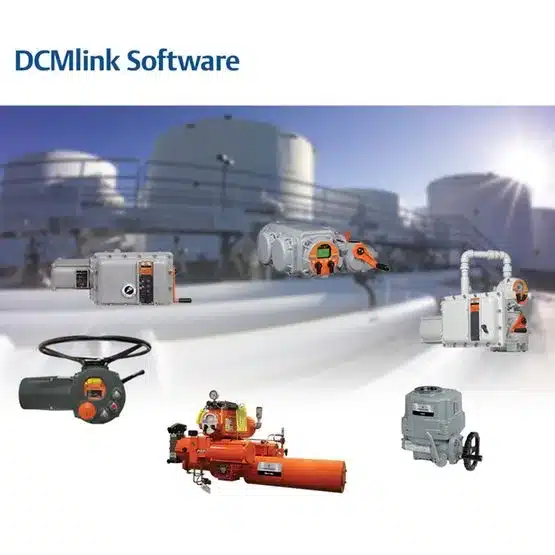
We know electric actuators have become an essential component in valve automation, offering precise control and efficient operation. Now we are going to talk about how they work, the finest engineered large bore actuators, and reputable electric actuator spares manufacturers. We will also discuss EIM actuator products and manual gear valve actuators, as well as the importance of relevant documentation and finding your nearest office location for support.
How does an electrical actuator work?
An electric actuator is a device that converts electrical energy into mechanical motion to automate valve operation. It typically consists of a motor, gears, and a valve shaft diameter that matches the valve it is operating. The motor drives the gears, which in turn rotate the valve shaft to open or close the valve.
Finest Engineered Large Bore Actuators
Large bore actuators are designed to handle high flow rates and are commonly used in isolation applications. Some of the finest engineered large bore actuators include both new and re-manufactured engineered large bore actuators, ensuring optimal performance and durability even in demanding conditions.
EIM Electric Actuator Products
EIM is a well-known brand in the industry, offering a wide range of electric actuators suitable for various applications. EIM electric actuators are known for their reliability, efficiency, and ease of use, making them a popular choice among valve automation professionals.
Manual Gear Valve Actuators
In addition to electric actuators, manual gear valve actuators are also available for situations where electrical power is not accessible or desired. These actuators use a handwheel or lever to manually operate the valve, providing a cost-effective alternative to electric actuators.
Electric Actuator Spares Manufacturers
When it comes to maintaining and repairing electric actuators, it’s essential to source parts from reputable electric actuator spares manufacturers. By doing so, you can ensure the quality and compatibility of the replacement components, prolonging the life of your actuators.
Relevant Documentation and Nearest Office Location
Before installing or servicing any electric actuator, it’s crucial to consult the relevant documentation provided by the manufacturer. This information typically includes installation instructions, maintenance guidelines, and troubleshooting tips. Additionally, knowing your nearest office location for the actuator manufacturer can be beneficial in case you require technical support or assistance in procuring spare parts.
Rotary Valves (Electric Actuator for Ball Valve, Electric Actuator for Butterfly Valve)
Rotary valves include plug valves, ball valves, butterfly valves, and dampers or baffles. These valves need electric actuators with 90-degree rotary operation with the required torque.
Linear Type Valves(Sliding Stem, Electric Actuator for Control Valve)
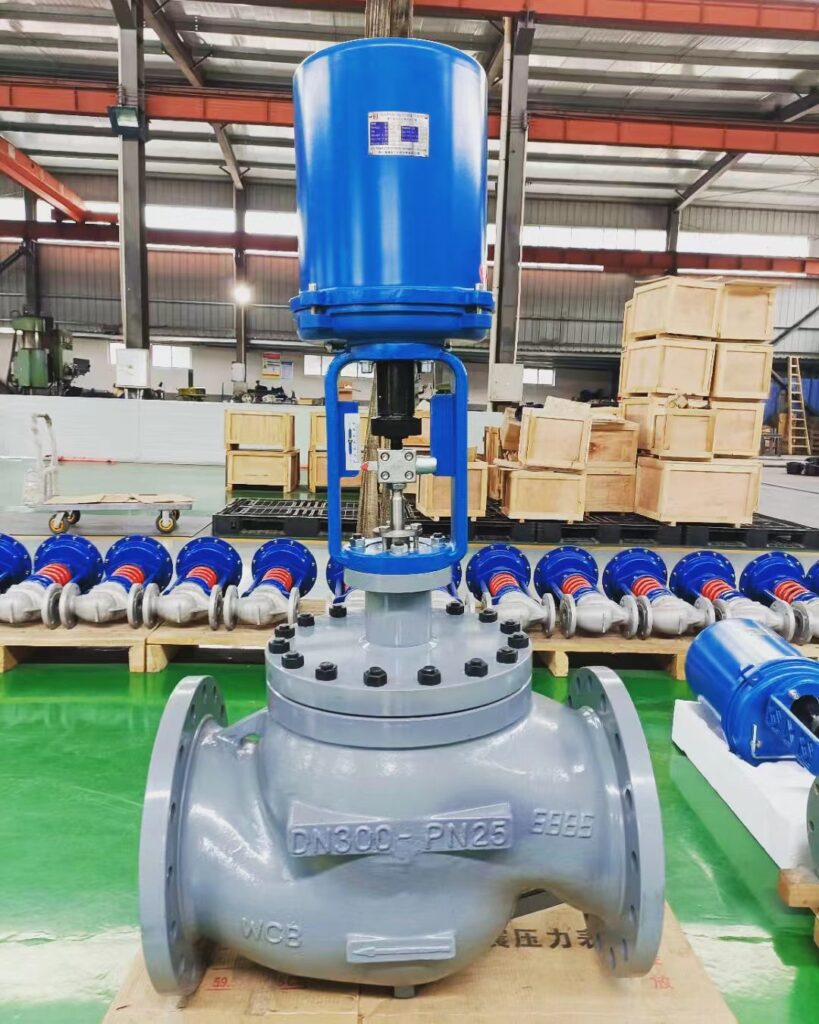
Linear type valves can be designed by non-rotating lifting stem or rotating non-lifting stem, or they need a multi-turn operation to drive the valve to the open or closed position. sliding stem valves include globe valves, gate valves, knife gate valves, etc. As an alternative, linear output pneumatic or hydraulic cylinders or membrane electric actuators are also can drive the above valves.
Switching Control
The biggest advantage of automatic control valves is that the valves can be operated from a remote location, which means that the operator can sit in the control room and control the production process without the need to be physically present to manually operate the valves on and off. One only needs to lay some piping to connect the control room to the electric actuator, and the drive energy is directly stimulated through the wiring to the electric actuator, usually with a 4-20mA signal to feedback the position of the valve.
Continuous Control
If an electric actuator is required to control parameters such as level, flow, or pressure of a process system, which is a job that requires the electric actuator to act frequently, a 4-20mA signal can be used as the control signal, however, this signal may change as frequently as the process. If required high-frequency action for the electric actuator, then only select a special electric actuator that can start and stop the frequent action. When multiple electric actuators are required in a process, the installation costs can be greatly reduced by using a digital communication system that connects the individual electric actuators together. Digital communication loops allow for fast and efficient transmission of commands and the collection of information. There are various communication methods such as FOUNDATIONFIELDBUS, PROFIBUS, DEVICENET, HART, and PAKSCAN designed for valve electric actuators. Digital communication systems not only reduce investment costs but also collect a large amount of valve information that is valuable for predictive maintenance procedures for valves.
Most of the above information applies to all kinds of valves, but the focus is different, for example: for butterfly valves, the friction in valve operation is negligible, but for plug valves, this friction value is very large. Different valves have different torque operating curves, for example: for the wedge gate valve, the opening and closing torque are very large, and during other strokes only packing friction and thread friction. When closing, the liquid static pressure acting on the gate increases the seat friction, and eventually, the wedge effect causes the torque to increase quickly until it is closed. Therefore, the change of the torque curve can predict the failure that will occur and can provide valuable information for predictive maintenance.
electric valve actuator manufacturers
There are many electric valve actuator manufacturers globally, but here are a few notable ones:
Auma
A German-based manufacturer that produces electric valve actuators for various industries, including oil and gas, power generation, and water/wastewater treatment.
Rotork
A UK-based company that produces electric valve actuators for various applications, including pipeline, valve automation, and process control.
Emerson
An American-based company that produces electric valve actuators for many industries, including chemical, oil and gas, power, and water treatment.
Flowserve
A US-based company that offers multiple types of electric valve actuators for a range of applications, including oil and gas, water treatment, and pharmaceuticals.
Bernard Controls
A France-based company that primarily produces electric valve actuators for the maritime industry.
Belimo
A Swiss-based company that specializes in electric valve actuators for HVAC systems.
These manufacturers are just a few of the many options available in the market. When choosing an electric valve actuator manufacturer, it is important to consider factors such as quality, reliability, and compatibility with your specific valve and application.
8 Considerations During Selection of Electric Actuator for Valves
Electric actuators are mechanical and electronic components devices which commonly used in industrial applications such as water treatment plants, chemical processing facilities, power generation, oil refineries, and other industries. Here are 8 considerations you should be careful about in the selection of electric actuators.
1. Operating Torque
Operating torque is the most important parameter for selecting a valve electric actuator device, the electric actuator output torque should be 1.2 to 1.5 times the maximum torque of the valve operation.
2. Operating Thrust
The mainframe structure of the valve electric device has two types: one is not configured with a thrust disk, it’s output torque directly. The other is configured with a thrust disk, the output torque is converted to output thrust through the stem nut in the thrust disk.
3. The Number of Turns of The Output Shaft
The number of turns of the output shaft of the valve electric device is related to the nominal diameter of the valve, stem thread pitch, and thread head, to be calculated according to M = H / ZS (M is the total number of turns that the electric actuator should meet, H is the valve opening height, S is the stem drive thread pitch, Z is the number of stem thread head).
4. Stem Diameter
For a multi-turn type rising stem valve, if the electric device allows the maximum stem diameter to pass through the stem of the matched valve, it can not be assembled into an electric valve. so the inner dimension of the output shaft for the electric actuator should be larger than the outer diameter of the valve stem. For part of the rotary valve and multi-turn valve in the non-rising stem valve, although do not have to consider the stem diameter, in the matching should also consideration to the stem diameter and the size of the keyway, so that the assembly can work smoothly.
5. Output Speed
If the valve opening and closing speed are too fast, there is a risk of a water strike phenomenon. So, it is necessary to choose a suitable opening and closing speed based on various conditions.
6. Motor
After the determined all specification, then its control torque is also determined. Generally running in the predetermined time, the motor will not exceed the load.
7. Control Model
The valve electric actuator is divided into switching type and regulating type, regulating actuator signal is also divided into current signal and voltage signal.
8. Power Voltage
The general electric actuator voltage is AC220V, AC380V, DC24V, etc.
In Conclusion

When selecting an electric actuator, the main considerations are the movement type of the actuator output shaft, the output torque (or thrust), the control mode (input/output signal), the protection class, the installation space, etc., THINKTANK as a control valve manufacturer, we always use well-known brands of electric actuators to ensure the best performance of our control valves. Should you have any questions, just feel free to contact our representative to consult more information.


